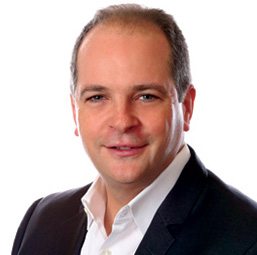ResMed primes patient pump Company continues to ride ‘tailwind’ of weight loss meds, wearables & further experiments with role as concierge

By Liz Beaulieu, Editor
Updated 11:20 AM CDT, Fri August 2, 2024
 SAN DIEGO – ResMed CEO Mick Farrell says the “vast majority” of the company’s growth in devices and masks is due to increases in patient flow, not price increases.
SAN DIEGO – ResMed CEO Mick Farrell says the “vast majority” of the company’s growth in devices and masks is due to increases in patient flow, not price increases.
In the U.S., Canada and Latin America, the company reported a 5% increase in device sales and a 17% increase in mask sales in the fourth quarter of fiscal year 2024, even while up against “incredible double-digit comps” from the same period the previous year, he said.
“I was impressed with those numbers,” Farrell said during a recent conference call to discuss the company’s latest financial results. “I think the team is doing incredibly well and doing it through patient flow, which is very strong. Our costs have gone up, and we did have some adjustments to pricing over the last 12 months, but the primary generator here is the flow of patients, and our job is to continue to have that grow and grow even faster as we go throughout the fiscal years ahead.”
With growth in the overall market pegged at the mid-single digits, Farrell said ResMed is “holding share or gaining share.”
Price premiums
Farrell said price increases not only reflect ResMed’s increased costs but also the company’s latest innovations in device and mask technology.
“The AirSense 11 was higher priced than the AirSense 10, but it's small,” he said. “It’s quieter; it's more comfortable; it's more connected. It has over-the-air upgrades. It has all these advances. And so, it has a high price point. Similarly, with the F40 out there. It's the smallest oral nasal mask in the 35-year history of ResMed. So that – those will be at price premiums.”
Farrell continued: “Look, frankly, I hope inflation comes down and costs come down, and we can share some savings with our customers because they have a tough time with reimbursement often not going up. “
Patient flow
Bigger picture, ResMed, which has only single-digit penetration in a market of about 1 billion patients estimated to have sleep apnea, continues to focus on demand generation efforts and resupply programs. The company’s latest data analysis, which now includes more than 811,000 de-identified patients, shows GLP-1 medications continue to funnel patients into the health care system to seek therapy and stay on therapy.
“For patients prescribed a GLP-1 medication, the latest data show a 10.7 absolute percentage points higher propensity to start PAP therapy over those without a GLP-1 prescription,” he said. “In terms of longer-term impacts on therapy, we have seen that the resupply rate at T equals 12 months is 310 basis points, so 3.1 absolute percentage points higher for the patients who have a GLP-1 prescription and further at T equals 24 months, the resupply rate is 530 basis points, or 5.3 absolute percentage points higher.”
Farrell continued: “These data show that the new pharmaceutical class is a clear tailwind for our business, bringing more patients into the health care system. And more than that, we believe it is bringing highly motivated patients into the healthcare system.”
Health concierge
But ResMed isn’t just sitting back benefiting from increased awareness from GLP-1s, as well as wearables, Farrell said. The company is experimenting globally with ways it can increase demand for devices and masks.
“The real question is, can ResMed really pick up and fight and be the world leader (as) a digital sleep health concierge to take that sleep concern consumer and help them find a path to a health care specialist to a protocol to a system that gets them screened, diagnosed and treated,” he said. “We're making good progress on it. We're partnering with an ecosystem of other smaller players out there, as well as our own technology in all 140 countries. I can tell you the experiments are happening, and we're seeing some success. I do think we can take market growth rate and move it up by 50, 75, 100, maybe even 125 basis points.”
Farrell continued: “We're not going to double (the growth rate). It's a huge, huge global franchise now – look at our trailing 12 months revenue north of $4.5 billion – but I do think we can move it up 50, 75, 125 basis points by bringing these new technologies that help with that digital sleep pathway.”
Comments